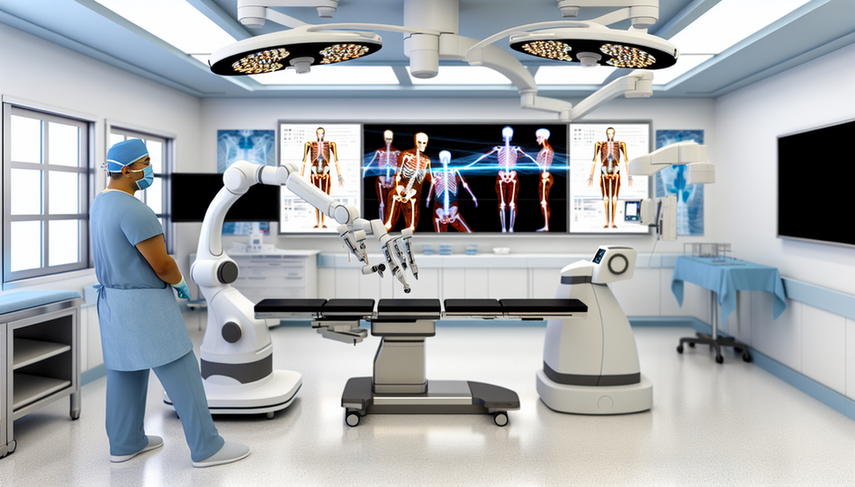AI in Orthopedics: Biomechanical Analysis and Robotic Surgery to Enhance Musculoskeletal Injury Diagnosis

The integration of artificial intelligence (AI) in orthopedics is revolutionizing the field of diagnosis and treatment of musculoskeletal injuries. With advancements in biomechanical analysis and robotic surgery, healthcare professionals can now provide more accurate diagnoses and more effective treatments. This article explores how these innovations are optimizing the diagnosis of musculoskeletal injuries and improving surgical outcomes.
Biomechanical Analysis and Its Impact on Diagnosis
Biomechanical analysis has become an essential tool for understanding the complexities of orthopedic injuries. Recent studies have demonstrated how knee rotations affect the stresses on ligaments, such as the anterior cruciate ligament (ACL) and the medial collateral ligament (MCL). For instance, one study utilized a six-degree-of-freedom robotic manipulator to assess ligament stresses in cadaveric models, revealing that combined rotations and isolated abduction produce significant changes in the tension of the ACL and MCL [1].
Furthermore, the application of valgus torques in knees with ACL deficiency has been quantified, showing how these forces can be used to evaluate deficient and reconstructed knees without damaging the ACL graft [2]. These advancements in biomechanical analysis enable orthopedic surgeons to plan more precise and personalized interventions.
Robotic Surgery: Precision and Efficacy
Robotic surgery has transformed the way orthopedic interventions are performed. Robotic testing systems have significantly improved the performance of biomechanical tests, allowing for more precise control of the forces applied to human joints [3]. An example of this is the use of intelligent PID controllers that enhance the ability of robotic systems to handle the complexities of biomechanical testing [4].
These advancements not only improve the precision of surgical interventions but also reduce the risk of postoperative complications. The ability of robotic systems to replicate complex human movements and apply controlled forces has allowed surgeons to perform procedures with unprecedented accuracy.
Conclusions
The integration of AI in orthopedics through biomechanical analysis and robotic surgery is redefining the diagnosis and treatment of musculoskeletal injuries. These technological advancements not only enhance diagnostic accuracy but also optimize surgical outcomes, offering patients a faster and more effective recovery. As we continue to explore these innovations, the future of orthopedics promises to be more precise and personalized, benefiting both patients and healthcare professionals.
Referencias
- [1] Knee Abduction Affects Greater Magnitude of Change in ACL and MCL Strains Than Matched Internal Tibial Rotation In Vitro
- [2] A quantitative analysis of valgus torque on the ACL: a human cadaveric study
- [3] Control methods and the performance of the robotic testing system for human musculoskeletal joints
- [4] Intelligent self-tuning of PID control for the robotic testing system for human musculoskeletal joints test
Created 24/1/2025
